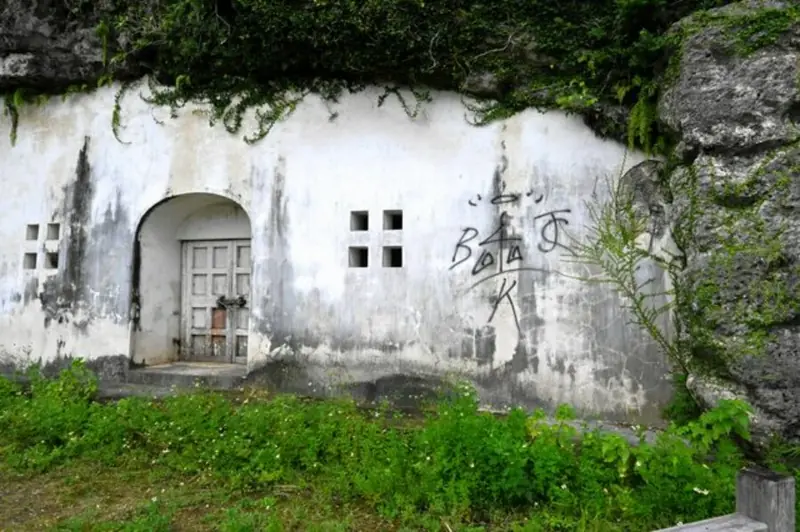
Vandalism, disguised under the innocent term “graffiti,” is not confined to one or two countries; it is pervasive. This troubling phenomenon is a symptom of our times. While the world evolves under the principles of 21st-century civilization, the intolerance exhibited by graffiti vandals towards cultural and historical values is escalating at an alarming rate.
A recent example of such carelessness is the defaced facade of the royal mausoleum in the city of Urasoe on Okinawa Island.
According to officials from Okinawa Prefecture, vandals have spray-painted graffiti on the 13th-century historical monument—the mausoleum of the Ryukyu Kingdom rulers, known as Urasoe Yodore. Now, the walls of this tomb are “adorned” with letters and patterns applied in black spray paint by these so-called “artists.”
What is known about the mausoleum
The structure is located in a rocky cave, northeast of the ruins of Urasoe Castle. The mausoleum houses the remains of three rulers buried in the 13th and 14th centuries, as well as another Ryukyu monarch who was laid to rest here several centuries later.
Construction of the mausoleum began in 1261 during the reign of Eiso, before Okinawa was divided into three kingdoms. At that time, power on the island was concentrated in the hands of local chieftains (kings), overseen by a chief ruler.
The burial complex, complete with a stone gate, was finished in 1271, as reported by Arkeonews. In addition to the burial site, space was also allocated for two gardens.
Inside the tomb, one can see shrines adorned with statues of bodhisattvas, as well as sculptural representations of a turtle and a crane. These elements reflect the influence of Buddhism on the rulers of that era.
During the Battle of Okinawa, this historical site suffered significant damage. However, it was restored by the government in 1955 with the involvement of architect Nakadzu Hisao.
This unique mausoleum, located in a natural cave, is designated as a cultural heritage site. It is considered a prototype of traditional Okinawan tombs. A surveillance camera captured footage of several individuals vandalizing the walls and arched gate of the mausoleum with spray paint on the morning of October 3. The Okinawa Prefectural Police have launched an investigation into the violation of the Cultural Properties Preservation Act.
